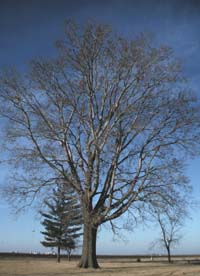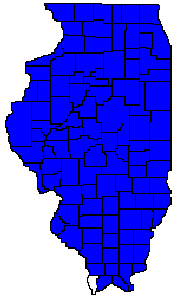 |
| Hackberry
(Celtis occidentalis)
Distribution
Map to Right |

Hackberry is a medium to large-sized tree growing to heights from 20 to 90 feet, depending upon the growing conditions. The crown is narrow and rounded in the forest, but broad, with pendant lower branches when open grown. The tree is tolerant of a wide range of habitats and grows on bottomlands as well as droughty upland sites
Interesting
Facts
Hackberry, also referred to as sugarberry, is in the Elm family (Ulmaceae). It is often used as an ornamental because of its hardiness and is frequently used as a "street" tree in cities because of its drought tolerance. Hackberry is very susceptible to fire damage, but regenerates very quickly following a fire.
Identifying Features
Bark
The bark is light gray and characteristically -warty,- with knobby projections arising from the ridges along the furrowed trunk. Young trees may have smoother bark, but as the tree grows older the knobs become more pronounced.
Leaves
The lance-shaped (or ovate) leaves are alternate, simple, 3 to 6 inches long and usually half as broad. They have a pointed tip and are toothed, except sometimes near the base where they may also be asymmetrical. The leaves are usually rough, but can be smooth on both surfaces.
Flowers
The flowers occur in drooping, greenish clusters in the spring.
Fruits
The fruit is dark purple, fleshy, and contains a single seed. It is eaten by a wide variety of songbirds as well as game birds such as bobwhite, the lesser prairie chicken, sharp-tailed grouse, and pheasant). Mice also feed on the fruit, which gave rise the common name "sugarberry."
Uses
The wood
is heavy and close-grained, but soft. It is used for fence posts and furniture.
Native Americans used hackberry to treat sore throat.